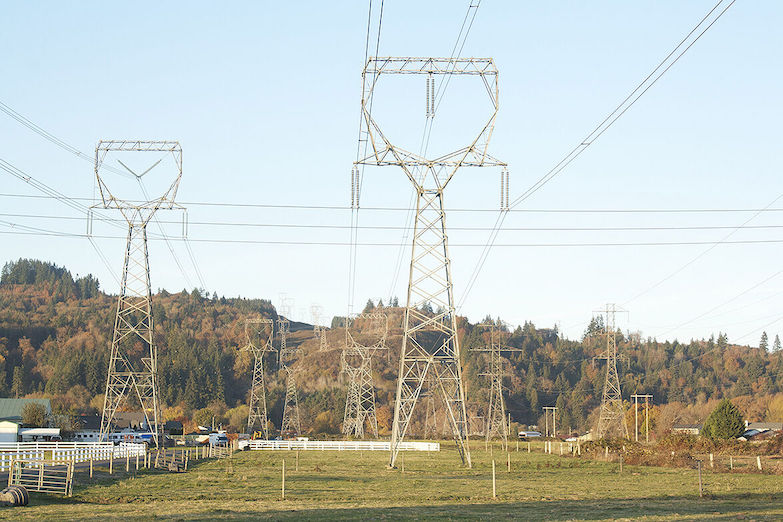forum
library
tutorial
contact

A Sobering Outlook
on the Power Supply
by Editorial Board
Capital Press, January 5, 2023
|
the film forum library tutorial contact |

|
A Sobering Outlook
by Editorial Board
|
In the Northwest, NERC expects capacity to fall
from 80,562 megawatts in 2023 to 74,611 megawatts in 2032.
 As Oregon and Washington set climate policies that simultaneously increase the demand for electricity and reduce supply, a recent report lays out some sobering prospects for the next decade.
As Oregon and Washington set climate policies that simultaneously increase the demand for electricity and reduce supply, a recent report lays out some sobering prospects for the next decade.
The North American Electric Reliability Corporation is a nonprofit that oversees the reliability and security of the electric grid in the United States and Canada. The grid connects the continent's generating stations and facilitates the transmission of electricity from where it is produced to where it is needed.
Part of NERC's mission requires that it make regular assessments of the system's adequacy and forecasts demand and capacity. Annually, it makes a 10-year forecast of the system's reliability. Its most recent assessment, released in December, makes for interesting reading.
"The bulk power system is undergoing unprecedented change on a scale and at a speed that challenges the ability to foresee and design for its future state," said John Moura, NERC's director of Reliability Assessment and Performance Analysis. "Managing the transformation and proactively preparing for the role that the grid will play is the greatest challenge to reliability over the next 10 years. Our assessment provides valuable insight into the reliability risks facing the bulk power system as it is shaped by government policies, regulations, consumer preferences and economic factors."
In dispassionate terms, the report lays out how state climate policy is taking coal and natural gas generating stations offline faster than new solar or wind facilities can replace the capacity. NERC says 88 gigawatts of generating capacity is scheduled to be retired over the next 10 years, and as much as 22 additional gigawatts of capacity could be retired in the following five years.
According to the U.S. Department of Energy, it takes 3.125 million solar cells or 333 utility-scale wind turbines to generate 1 gigawatt.
"It is critical that the pace of generator retirements be managed until solutions are in place that can continue to meet energy needs and provide essential reliability services," the report says.
In the Northwest, NERC expects capacity to fall from 80,562 megawatts in 2023 to 74,611 megawatts in 2032. At the same time, new regulations will increase the number of electric vehicles and furnaces in the region.
"The risk of energy shortfalls from wide-area, long duration heat events are expected to increase. Coal and natural gas generation retirements and lower amounts of hydro availability threaten reliability over the next 10 years. With high reliance on energy transfers, wide-area severe weather poses an increased risk to electricity supplies and transmission network impacts."
In short, extreme summer and winter weather could reduce locally generated electricity and prevent all-important electricity produced in Montana and Wyoming from being available to offset the shortfall.
Increase demand, reduce capacity. What could go wrong? It looks as though we'll find out.
learn more on topics covered in the film
see the video
read the script
learn the songs
discussion forum
